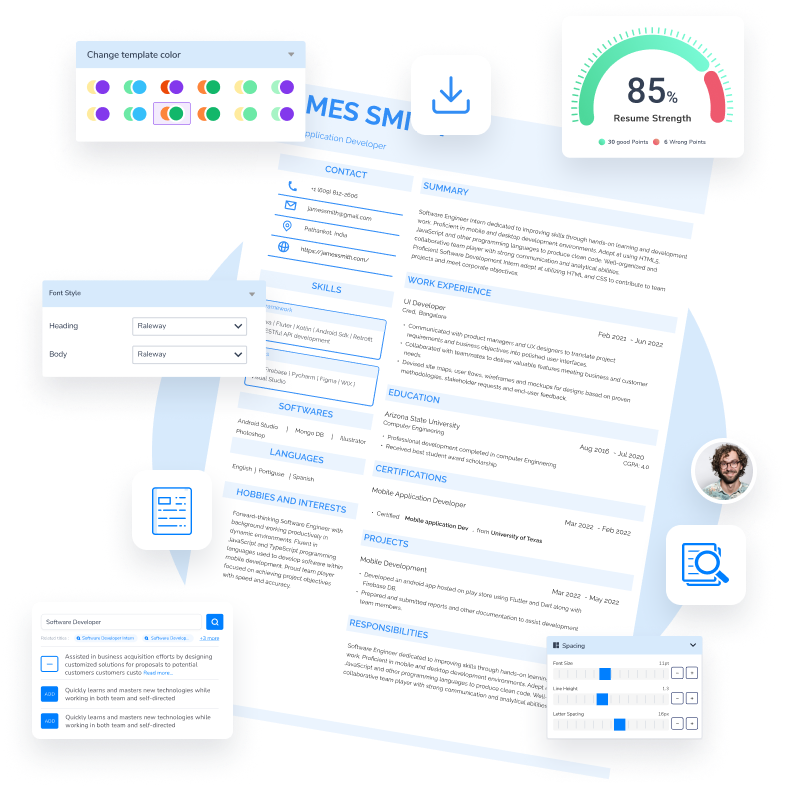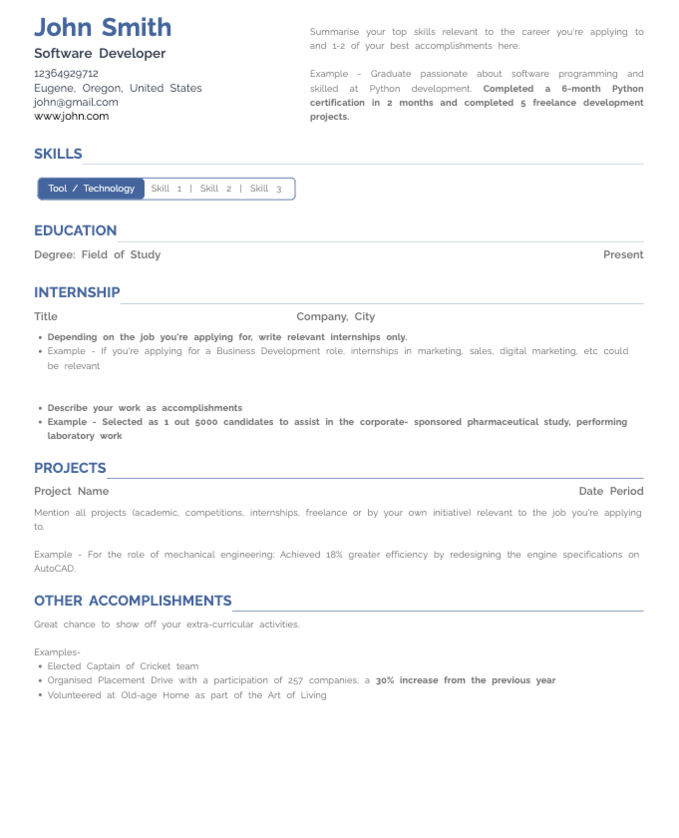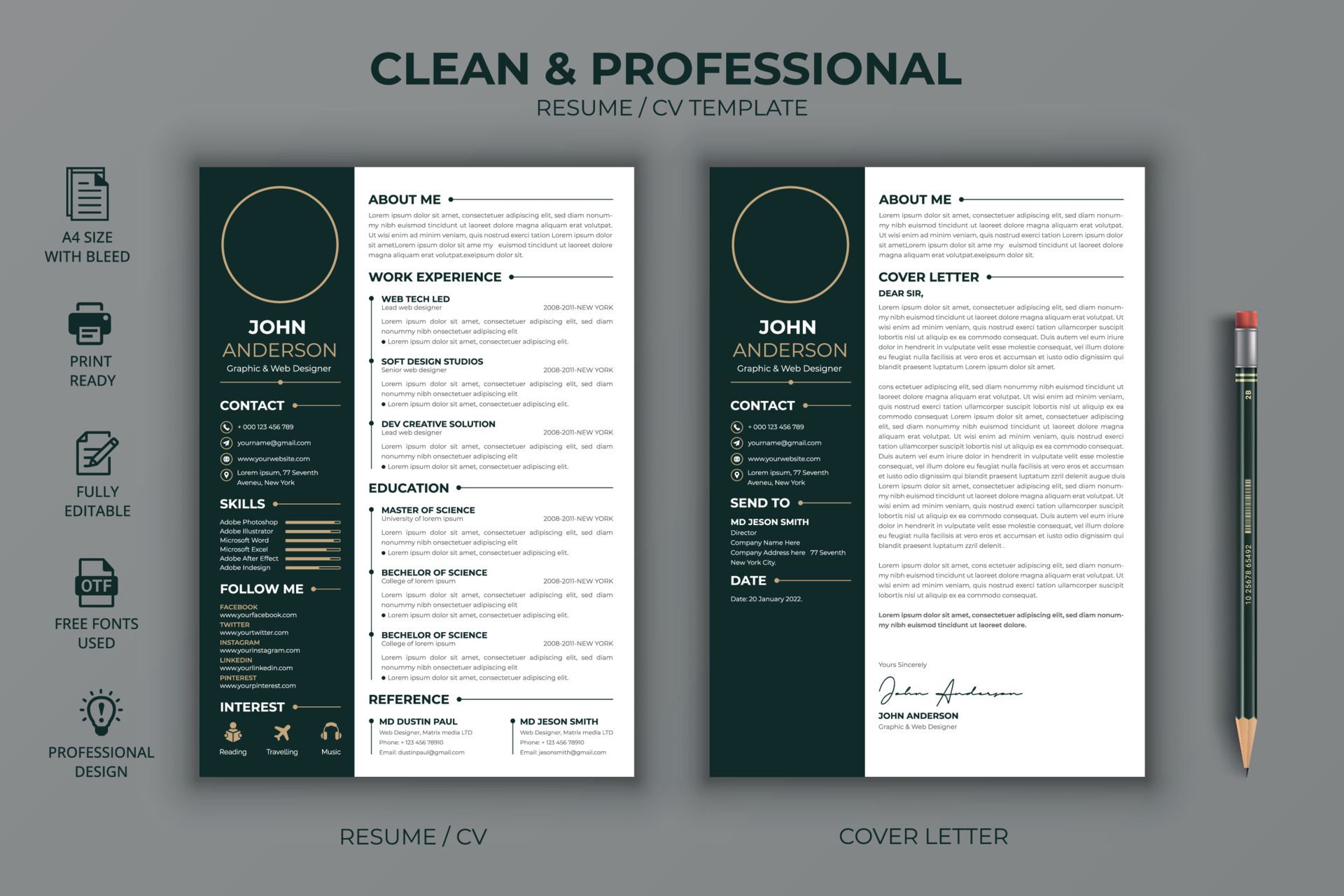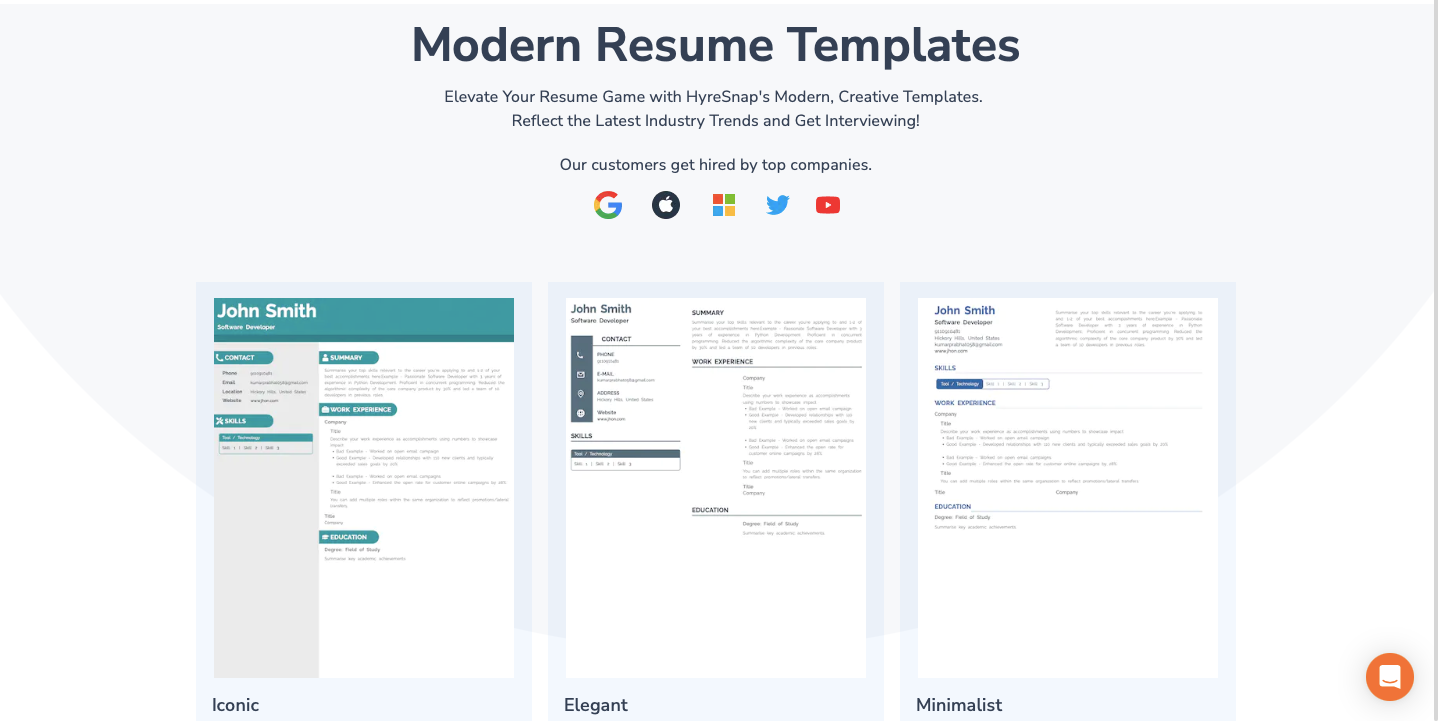Area Of Interest In Resume: 20+ Examples To Include
3 min read

How to Include area of interest in resume?
When it comes to scanning resumes, HR professionals dedicate a remarkably short amount of time to each document due to the overwhelming number of applications they receive.
On average, a mere 6 to 10 seconds is spent on the initial review of a resume. Shockingly, around 75% of resumes are swiftly rejected during this rapid scan.
To expedite the screening process, many HR departments employ applicant tracking systems (ATS) that search for specific keywords or phrases related to the job description.
Approximately 70% of employers utilize ATS, underscoring the importance of incorporating relevant keywords in your resume.
Aesthetics matter too, as 40% of hiring managers admit to disregarding resumes with formatting errors or an unprofessional appearance.
Furthermore, the ideal length of a resume is typically one to two pages, as 66% of hiring managers prefer concise documents.
Hence it become utmost important to make a eye catching resume with all the sections relevant to the job description. You can use HyreSnap resume maker to make one stunning resume today!
In this blog we will cover queries related to area of interest in resume, including the following:
HyreSnap also has great number of free CV templates for resume for freshers which you can explore and get benefited today!
The "Area of Interest" in resume is a brief statement or section that highlights the specific areas or fields in which a candidate has a particular interest or expertise.
It allows applicants to showcase their passion, enthusiasm, and focus within their chosen industry or profession.
This section helps employers and hiring managers understand the candidate's preferences and areas where they would be most motivated and engaged.
Including an Area of Interest in a resume can be particularly beneficial in the following ways:
By specifying their area of interest in resume, candidates can demonstrate how their professional goals align with the position they are applying for. It allows employers to gauge whether the candidate's interests correspond with the needs and objectives of the role.
This section provides an opportunity for candidates to showcase their expertise and knowledge in a specific area. It helps employers understand the candidate's level of proficiency and depth of understanding in a particular field, which can be valuable for roles requiring specialized skills.
Expressing a genuine interest in a specific area can also indicate a potential cultural fit within a company or industry. Employers often seek individuals who are passionate about their work, as it generally leads to higher job satisfaction, motivation, and dedication.
The "Area of Interest" in resume can serve as a conversation starter during interviews. Employers may inquire further about the candidate's passion, projects related to their area of interest in resume, or how they stay updated in that field.
This can help candidates engage in meaningful discussions and showcase their enthusiasm for the work they are most passionate about.
When including an "Area of Interest" in resume, it is important to be specific and relevant to the position or industry.
Candidates should choose areas that genuinely reflect their passion and align with their career goals. By doing so, they can demonstrate their commitment, expertise, and suitability for the desired role.
Including an "Area of Interest" section in your resume can provide several advantages and benefits. Here are some reasons why you should consider including this section:
By including your area of interest, you can showcase your genuine passion and enthusiasm for a specific field or topic. This section allows you to express your love for the work you do and highlights your dedication to your chosen area. It gives potential employers insight into what motivates and excites you professionally.
Including your area of interest in resume helps demonstrate that your career goals and aspirations align with the position you are applying for.
It indicates to employers that you have a focused direction and a clear understanding of the industry or field. This alignment can make you a more attractive candidate and increase your chances of being considered for the role.
The area of interest you mention in resume can often be linked to specific skills, knowledge, or experiences. By including this section, you can emphasize your expertise in a particular area and showcase the relevant skills you have developed.
This can be particularly beneficial if you are applying for a role that requires specialized knowledge or a specific skill set.
The area of interest in resume can serve as a conversation starter during interviews. Hiring managers may ask you to elaborate on your interests, projects related to your area of interest, or how you stay updated in that field.
This gives you an opportunity to engage in meaningful discussions and demonstrate your depth of knowledge and passion for the subject matter.
Including your area of interest can also help employers assess your cultural fit within their organization. If your interests align with the company's values, mission, or industry focus, it indicates that you may thrive in their work environment.
It can also signal that you are more likely to be motivated and engaged in the role, contributing to a positive work atmosphere.
Remember to tailor the area of interest in resume to each job application, focusing on areas that are most relevant to the position and industry.
By including this section in your resume, you provide valuable insights into your passion, alignment with the role, and the skills you bring to the table, increasing your chances of standing out to potential employers.
Here is an example list of areas of interest that you can consider including in the "Area of Interest" in your resume:
Remember to select areas that genuinely reflect your interests and align with your career goals and the position you are applying for.
You can include one or more areas of interest, depending on their relevance to the role and your level of expertise or experience in those areas.
Below is the resume format with area of interest
[Your Name]
[Contact Information: Phone Number, Email Address, LinkedIn Profile]
[Professional Summary]
[Include a brief summary highlighting your key skills, experience, and career goals.]
[Education]
[Include details of your educational background, such as degree, university, and relevant coursework or achievements.]
[Work Experience]
[List your professional experience in reverse chronological order, including job title, company name, dates of employment, and key responsibilities and achievements.]
[Skills]
[Highlight your relevant skills, both technical and soft skills, that are applicable to the job you're applying for.]
[Area of Interest]
[Include a section specifically dedicated to your area(s) of interest. List the areas or fields that you are passionate about and have expertise or experience in. Here's an example:]
Area of Interest:
- Data Analysis and Visualization
- Digital Marketing and SEO
- Project Management and Agile Methodology
[Additional Sections]
[Include any additional sections that are relevant to your experience or enhance your candidacy, such as certifications, awards, publications, or volunteer work.]
[References]
[You can either provide a list of references or mention that they will be provided upon request.]
Remember to tailor the content of your resume, including the resume area of interest , to the specific job you're applying for.
This will help demonstrate your alignment with the position and industry, increasing your chances of catching the attention of potential employers.
You can use HyreSnap Resume Builder tool to easily add area of interest in CV.
Visit HyreSnap Resume Builder, though, if you require a more straightforward yet specialised resume-building option. Please contact us at info@hyresnap.com if you require any extra career-related advice.

Try Now for Free!





















![250 Job Titles For a Resume [Examples for Any Profession]](https://storage.googleapis.com/ureify-strapi-assets/resume_for_any_job_78f3082fe8/resume_for_any_job_78f3082fe8.webp)